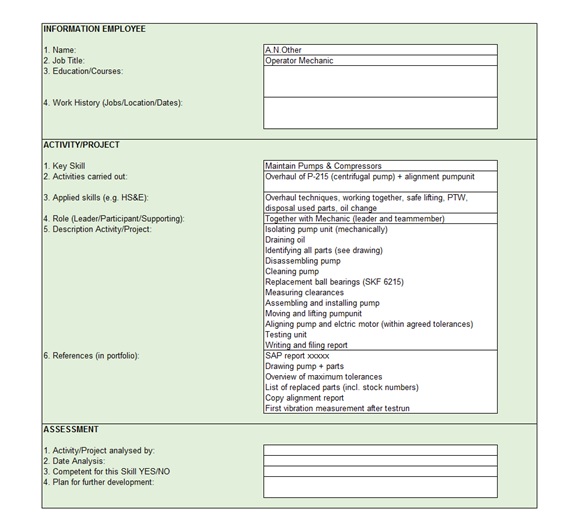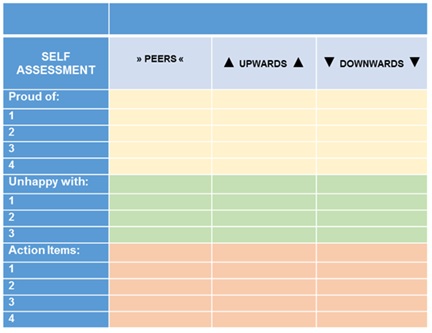Competence Assessment
Under the button “Competence Assurance Programme” one can already see how Competence Assessment is integrated into the assurance process and that the main component of the assessment is the actual collection of evidence.
The first question will be how much evidence is needed. The short answer is “enough to satisfy the assessor”. This does not mean that the assessor has the freedom to make his own rules; he is bound by the procedures as laid down in the CAP procedures.
In general, the evidence produced must be:
- sufficient – demonstrates level and breadth of competence being assessed
- relevant – must be appropriate to the function and skill element being assessed
- current – based on current work performance (past performance can be considered)
- authentic – evidence is from the employee’s own work
Methods of Collecting Evidence
Self-assessment
A self-assessment is an efficient instrument for evaluating occupational skills. An employee completes a self-assessment against his Job Profile, which has been agreed for his function. In general the employee simply indicates his level of ability in each described skill area using the defined competence level standards.
Supervisor Evaluation
A Supervisor evaluation is essentially the same technique as self-assessment, except for the fact that rating is performed by a supervisor (and/or possibly peers). In this evaluation, each of the identified skills would be rated for each employee.
Witness Testimony
In principles the method of assessment is identical to Supervisor Evaluation, but with this method the assessment is carried out by a person who is familiar with the subject and who has the authority to assess.
Activity Portfolio
This method of collecting evidence is based on analysing jobs/tasks the incumbent has been involved with. This can be through participation in projects/assignments/case studies or activities that are part of his daily routine. A full description of his involvement and his role in the activity needs to be fully documented.
To avoid unnecessary paperwork digital filing of evidence may be considered.

Above is an example how an Activity Portfolio may look like
360o Feedback
360o Feedback is designed to provide each employee and an assessor with valuable data that can be used as evidence for assessment and to plan effective personal development and improvement. It is a process that is widely used in leading-edge organisations. Typically with 360o Feedback, information is obtained on behavioural and work related aspects.

Separate forms need to be completed for “My Activities” and “My Behaviour” to satisfy the assessment requirements
Observation of Work Performance
Direct observation means observing an employee undertaking actual activities or skills in a real-life, everyday working situation. It is valid, reliable and accounts for the pressures at work, which can influence performance. To ensure reliability of the outcome, it is advised to use a pre-established list of evidence criteria based on the selected Key Skills and the agreed competence levels.

Observation of actual workplace performance will always be an assessor’s primary form of evidence collection.
Structured Interview
In a structured interview, a pre-established set of questions and/or scenarios (based on the selected Assessment Standards are presented to the employee in a face-to-face meeting with the assessor and/or supervisor as interviewer.
Training Course Certificate
Attendance of a training course in itself does in most cases not give the confidence that the necessary skills are acquired. However, when a training course is closed off with a formal assessment of some kind, a ‘pass’ will constitute sufficient proof of achievement.
A good example would be a First Aid course where a successful employee receives a nationally recognised certificate of achievement. A Permit to Work course normally results in a certificate recognised by the organisation, which provides sufficient proof to cover the corresponding skill requirements.
Vendor training can be tailored to provide the necessary information for an employee to collect evidence specific to a facility / asset.
